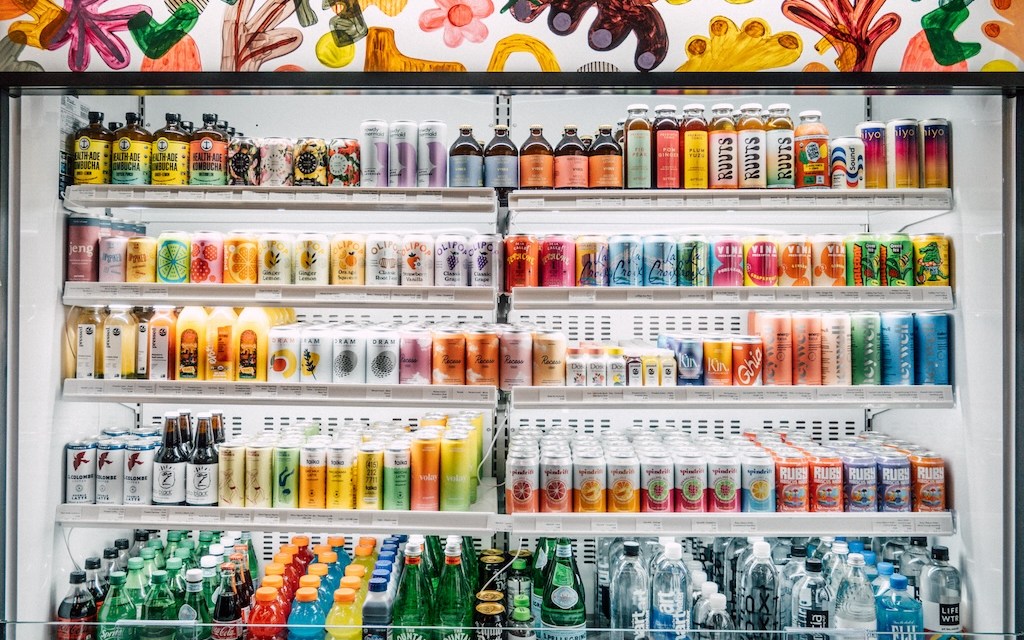Foxtrot is the latest retail closure that deals a blow to emerging brands

After launching in March 2022, chocolate brand Spring & Mulberry spent over a year and a half working to get into Foxtrot. Finally, last November, its products made their debut, marking the startup’s first retail chain deal.
The brand’s co-founder, Kathryn Shah, told Modern Retail Spring & Mulberry “jumped through countless hoops” to get into Foxtrot, a process that included making a smaller chocolate bar size that required new equipment. Spring & Mulberry also had to start working with Pod Foods, Foxtrot’s distributor of choice, and got its inventory set up in three distribution centers.
With Foxtrot’s sudden closure of all 33 of its locations, Shah said the brand’s unsold inventory is currently sitting in distribution with no one to buy it.
“We were totally caught off guard by the news, Foxtrot had been ordering product just last week,” Shah said. “We found out about it through the company-wide email and thought it was a prank.”
But the Foxtrot fiasco is just the latest in a series of blows that have been dealt to emerging brands. Foxtrot was one of a few multi-brand retailers that launched over the last five or so years with the goal of making it easier for cool, young food and beverage brands to enter retail. And most of the retail concept stores have now shuttered. Within the past six months, department store concepts Showfields and Neighborhood Goods have also ceased operations, after they had trouble raising more funds. Earlier this month, non-alcoholic bottle shop chain Boisson filed for bankruptcy and closed all eight of its stores.
According to small brands that struck up partnerships with these retailers, these retail collapses aren’t just a sales account loss. They also mean the options for launching and growing food and beverage brands with the help of these curation-focused specialty shops is dwindling.
The appeal of the multi-brand store
The Foxtrot partnership in particular was a pivotal point in Spring & Mulberry’s omnichannel roadmap. The company began by selling direct-to-consumer as well as a few specialty grocery shops. The brand also briefly tested physical retail at Neighborhood Goods, which also closed earlier this year.
“We were excited to be on Foxtrot shelves because they did such a great job curating chic, hip brands,” Shah said. “It also allowed us to break into markets that weren’t just New York or L.A.” It was also much easier to get into 30 locations, compared to large chains with thousands of stores nationwide.
For one founder of a beverage brand, the unforeseen shuttering of Foxtrot isn’t just disappointing, it also resulted in unforeseen expenses.
“We put tens of thousands of dollars down in just the last 45 days to partner with them on marketing, demoing and more,” the founder, who wished to remain anonymous, said. “For us as a brand, it’s a brutal loss, not just because of the now-wasted marketing and partnership spend, but also because they were in many ways the ideal retail partner.” For the premium beverage brand, he said, Foxtrot and Dom’s offered a “curated, high traffic and had a trend-forward affluent young customer.”
A disappearing channel
For food and beverage startups that are just starting out, it costs money to get into grocery chains — something that they typically don’t have a lot of right away. Rather than targeting a big chain like Walmart or Target, startups often first pitch a smaller, regional chain or independent boutiques. Not only are these independent retailers more likely to take a chance on emerging brands but brands don’t have to spend as much money on inventory to service them.
In addition to Foxtrot, some of the food and beverage stores that are known for taking a chance on emerging brands are Pop Up Grocer, The Goods Mart and Erewhon.
The founder of one snack brand, which sold through multiple Foxtrot locations, said that his brand is now big enough that losing an account like Foxtrot isn’t a big deal. His brand now sells through a number of national chains like Whole Foods and Target.
The founder, who also asked to remain anonymous, said that Foxtrot was one of the early retailers who took a chance on his brand before his company was big enough to get into Whole Foods and Target.
“Ultimately, if you want to build a $100 million revenue brand, you have to win where most consumers are shopping,” he said, referring to chains like Walmart and Kroger. Still, he went on, “it definitely helps to have a great data story at Foxtrot when pitching Whole Foods or Sprouts.”
Shah of Spring & Mulberry said there are still plenty of specialty grocers that emerging brands can go to to establish proof of concept. She’s thankful that her brand also entered Erewhon around the same time that it entered Foxtrot.
“The challenge is that Foxtrot and Erewhon put themselves on the map as purveyors of innovative, trending, and exciting new food brands,” she said. Therefore, they had resources and reach that even other small, regional grocers of a similar size can’t offer.
“I think Erewhon and Pop Up Grocer are great examples of other businesses that aim to serve food startups in [a similar way]” Shah said. “But it’s still incredibly disheartening to see one of the most prominent examples fail.”

